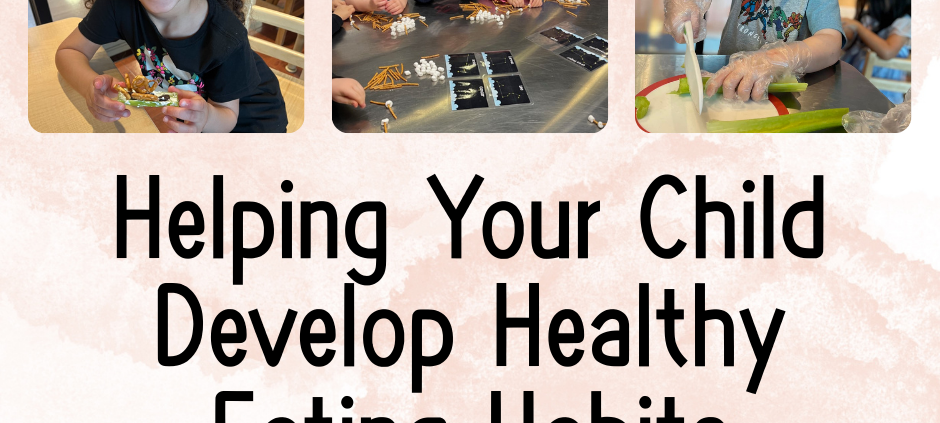Helping your child develop healthy eating habits
As parents, we all want our children to grow up strong, happy, and healthy. One of the best ways to support their well-being is by encouraging healthy eating habits from an early age. At Imagine Early Education and Childcare, we believe that nutrition plays a vital role in a child’s development, helping them stay focused, energized, and ready to learn.
If you’re looking for ways to guide your child toward better eating habits, here are some simple and practical tips to make healthy eating fun and enjoyable!
- Make Healthy Foods Fun and Exciting
Presentation is key when it comes to getting kids interested in nutritious foods. Try these fun ideas:
🥕 Create a rainbow plate – Serve colorful fruits and veggies to make meals visually appealing.
🍎 Use fun shapes – Cut sandwiches, cheese, or fruit into stars, hearts, or animal shapes.
🥦 Make food interactive – Let your child dip veggies in hummus or yogurt-based dressings.
When healthy food looks fun, kids are more likely to try it!
- Get Your Child Involved
Children are more excited to eat healthy when they take part in preparing their meals. Here’s how to include them:
👩🍳 Let them help wash fruits and veggies.
🍽️ Allow them to pick a healthy side dish for dinner.
🥗 Give them simple tasks like stirring, pouring, or assembling their own plate.
This hands-on approach makes them feel empowered and more likely to try new foods.
- Be a Role Model
Kids love to imitate their parents, so set a good example by choosing healthy foods yourself. If they see you enjoying fresh fruits, vegetables, and whole grains, they’ll be more likely to do the same.
- Offer Healthy Choices, Not Restrictions
Instead of saying, “You can’t have that,” try offering choices like:
🥑 “Would you like apple slices or carrot sticks with your lunch?”
🍌 “Would you like yogurt with berries or a banana for a snack?”
Giving them a say in what they eat makes them feel independent while still guiding them toward nutritious options.
- Keep Healthy Snacks Readily Available
Make it easy for your child to grab a healthy snack by keeping nutritious foods within reach. Some great grab-and-go options include:
🍓 Pre-cut fruits and veggies
🧀 String cheese or yogurt
🥜 Nuts or whole-grain crackers (if age-appropriate)
- Avoid Using Food as a Reward or Punishment
It’s tempting to say, “Eat your veggies, and you’ll get dessert,” but this can make kids view certain foods as “good” or “bad.” Instead, create a balanced mindset where all foods have a place in their diet, with healthy choices being the norm.
- Introduce New Foods Slowly
Children may need multiple exposures to a new food before they accept it. If they don’t like something at first, don’t force it—just keep offering it in different ways. Try roasting, blending, or adding new seasonings to make flavors more appealing.
- Eat Together as a Family
Family mealtime is a great way to encourage healthy eating habits. When kids see their parents and siblings enjoying a variety of foods, they’re more likely to do the same. Plus, it’s a wonderful time to bond and create positive associations with food.
- Teach the “Why” Behind Healthy Eating
Help your child understand why good nutrition matters in a way they can relate to:
💪 “Eating protein helps your muscles grow strong!”
🧠 “Healthy food gives your brain energy to learn and play!”
⚡ “Drinking water keeps you energized and feeling great!”
When kids see food as fuel for their bodies, they’ll be more willing to make good choices.
- Be Patient and Keep It Positive
Building healthy eating habits takes time. Encourage progress without pressure and celebrate small victories. Every step toward a balanced diet is a win!
Healthy Eating Starts Early!
By making nutritious foods fun, involving your child in the process, and setting a positive example, you can help them build healthy habits that will last a lifetime. At Imagine Early Education and Childcare, we are committed to fostering a love for healthy eating through balanced meals and engaging food experiences.




Leave a Reply
Want to join the discussion?Feel free to contribute!